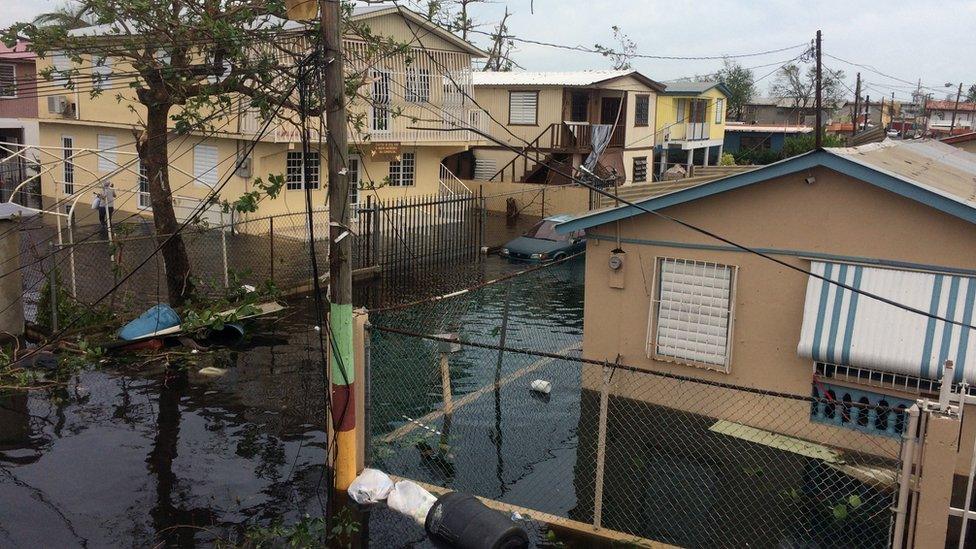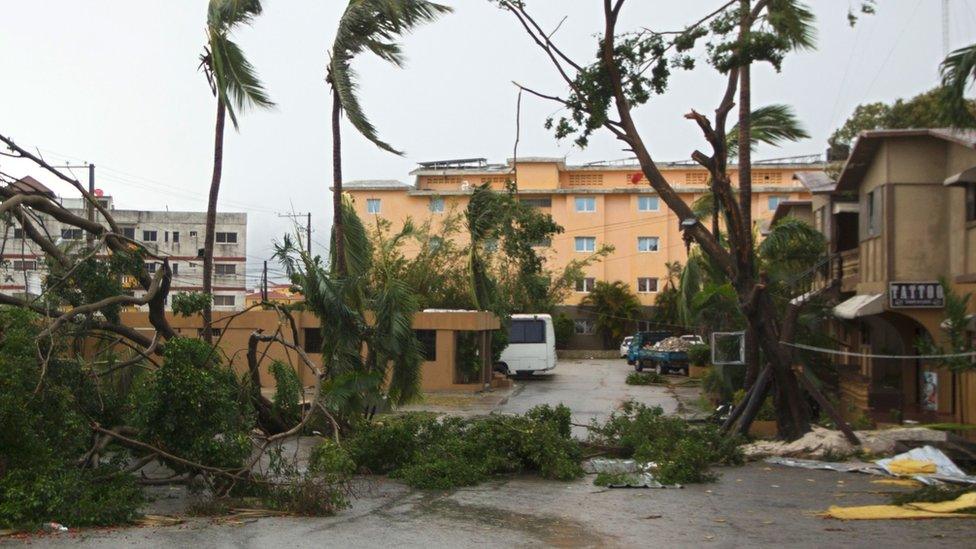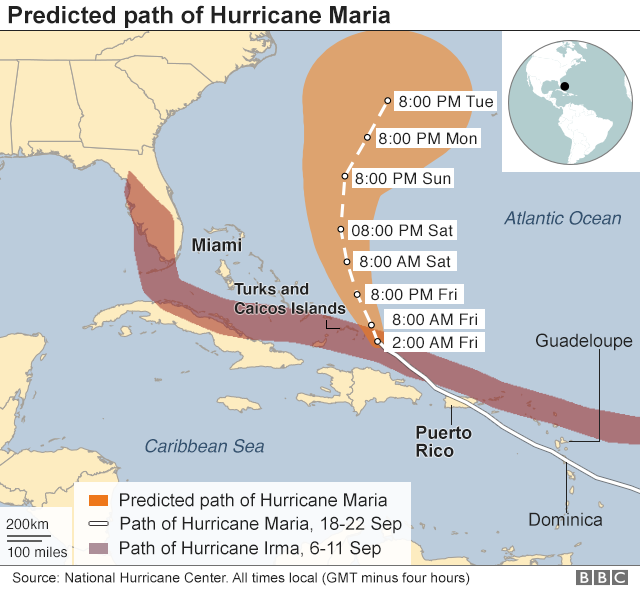Hurricane Maria eye nears Turks and Caicos Islands
- Published

Large parts of Puerto Rico are under water after the hurricane
Hurricane Maria is passing the Turks and Caicos Islands as it continues its destructive path across the Caribbean.
The storm, now a category 3, is north-east of the island of Grand Turk with winds of 205km/h (125mph), the US National Hurricane Center says., external
Puerto Rico has completely lost power, and is being subjected to heavy rain and flooding, with possible mudslides.
At least 13 people are said to have died there, bringing the death toll so far across the region to 33.
Among that figure at least 15 lost their lives in Dominica, and 20 are still missing after the storm swept through on Monday. Two others perished on the French island of Guadeloupe, and three people were reported to have died in Haiti.
Puerto Rico Governor Ricardo Rossello has called Maria the most devastating storm in a century. It knocked out the US territory's entire electricity and telecoms infrastructure.
"Part of the island is lacking communications so what we have are some preliminary assessments about 13 deaths at this juncture," he told CNN.
After Hurricane Irma, Maria is the second major storm to hit the Caribbean this year.

High winds are still battering the Dominican Republic
Hurricane warnings are in place for British territory the Turks and Caicos and the south-eastern Bahamas, where the storm is heading next.
Experts have predicted a storm surge of more than 3m (12ft) above normal tide levels.
Officials in the Turks and Caicos have opened new shelters as several used during Hurricane Irma earlier this month are not expected to withstand further damage, AFP reported.
A warning remains in effect for parts of the Dominican Republic, which Maria passed on Thursday. The northern coast is still being battered and heavy rains have triggered flooding.
Authorities say several rivers burst their banks and hundreds of thousands of homes are without power.
In Puerto Rico, Governor Rossello said the biggest concern was rain and flooding in the west of the island, adding that the authorities expected up to 25in [63cm] from the tail of the hurricane.
Hurricane Maria: Puerto Rico faces long road to recovery
Mr Rossello added that Maria had hit the island's electricity grid so badly that it could take months to restore power.
Images shared on social media show roofs being stripped away as winds as strong as 140 mph (225 km/h) whipped trees and power lines in Puerto Rico's capital city, San Juan.
US President Donald Trump said the storm had "totally obliterated" the US territory, and declared it a disaster area, freeing up emergency relief funding.


Are you in an area affected by Hurricane Maria? If it's safe to do so, you can share your experience by emailing haveyoursay@bbc.co.uk, external.
Please include a contact number if you are willing to speak to a BBC journalist. You can also contact us in the following ways:
WhatsApp: +44 7555 173285
Send pictures/video to yourpics@bbc.co.uk, external
Tweet: @BBC_HaveYourSay, external
Text an SMS or MMS to 61124 (UK) or +44 7624 800 100 (international)